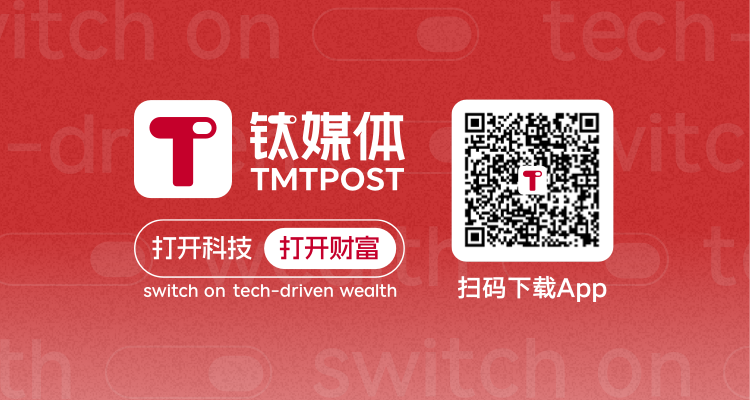
Image generated by AI
AsianFin -- In late September 2025, the global stablecoin market presents a strikingly divided landscape, reflecting both soaring ambition and mounting regulatory scrutiny. While some regions are embracing the technology to bolster financial innovation, others are aggressively tightening oversight, illustrating the delicate balance between growth and risk in the evolving digital currency space.
On September 23, Caixin reported that Chinese authorities had explicitly instructed institutions operating crypto asset businesses in Hong Kong to scale back key activities, including investment, trading, issuance of stablecoins, and engagement in real-world assets (RWAs). This marks a continuation of the government』s cautious approach toward digital currencies, prioritizing stability and financial sovereignty over unchecked innovation.
The tension was amplified when rumors surfaced on social media that Hong Kong had issued the world』s first stablecoin pegged to the offshore RMB. Officials quickly refuted the reports, highlighting the strict regulatory environment and signaling that speculative projects will not be tolerated.
China』s strategy, observers note, is twofold: Hong Kong serves as a 「compliance testing ground」 for exploring stablecoin innovation within a tightly regulated framework, while the mainland continues to advance the internationalization of the digital yuan. This approach underscores Beijing』s intent to maintain monetary sovereignty while cautiously participating in the global digital asset market.
While China adopts caution, the international arena is experiencing a frenzy of activity. On September 24, Tether, the world』s largest stablecoin issuer, reportedly sought financing at a valuation of $500 billion—a scale comparable to tech giants like OpenAI and SpaceX. Meanwhile, a consortium of nine major European banks announced plans to develop a euro-denominated stablecoin as a potential alternative to the US dollar.
This competitive surge illustrates the underlying tension in the digital financial ecosystem. According to experts, the market is an embodiment of the 「Mundell Impossible Trinity」 in the digital era: the challenge of simultaneously achieving free capital flows, exchange rate stability, and monetary sovereignty forces nations into divergent strategic choices. In practice, the U.S. is leveraging stablecoins to reinforce the dollar』s global dominance and encourage global absorption of its sovereign debt, while other countries, including China and members of the EU, are seeking alternatives to preserve their financial autonomy.
The secondary market has mirrored these uncertainties. Shares of Jiamai Technology have retracted 31% from their peaks, yet remain up 1,404% year-to-date. Guotai Junan International surged 556% over half a month in late June, later correcting by nearly 40%. Yunfeng Financial, Hengbao Co., and Wonders Information have each retreated 29%, 31%, and 35% from recent highs, demonstrating how investor sentiment is swinging amid regulatory crackdowns and technological hype.
Walking a Tightrope Between Innovation and Risk
Stablecoins are cryptocurrencies pegged to fiat currencies or stable assets, such as gold, designed to anchor value while providing liquidity. Initially launched to counter the extreme volatility of traditional cryptocurrencies, stablecoins were meant to bridge the gap between crypto markets and conventional finance. Yet despite their promise, these instruments carry significant systemic risks.
The collapse of TerraUSD (UST) in May 2022 exemplifies these dangers. Within a week, UST』s value plummeted to zero, wiping out $40 billion in market capitalization for itself and its sister token LUNA. Tether (USDT), the world』s largest stablecoin, has faced persistent scrutiny over its reserve transparency, delayed disclosures, and the use of potentially risky assets.
The Bank for International Settlements has repeatedly warned that stablecoins lack central bank backing, sufficient anti-illegal-use safeguards, and mechanisms for liquidity generation. Economists such as Pan Helin note that while stablecoins facilitate cross-border payments, their cryptographic, borderless nature also enables unregulated transactions, potentially facilitating money laundering and other illicit activities.
According to analysts at the Financial Street Securities Research Institute, the lifeline of stablecoins rests on redeemability for fiat currency. Insufficient reserves, opaque financial practices, or panic-driven redemptions could trigger systemic crises, highlighting the fragility of even 「stable」 cryptocurrencies.
The market has expanded dramatically. From a mere $5 billion in 2019, the global stablecoin market surged to $250 billion by 2024—a 45-fold increase over six years. This rapid growth has drawn intense regulatory focus. The EU』s MiCA Act, the U.S. GENIUS Act, and Hong Kong』s Stablecoin Regulation collectively signal a shift from wild expansion to regulated, compliant development.
Hong Kong, in particular, has crafted regulations deemed the world』s strictest: license issuance is expected in early 2026, with a small initial batch, a HK$25 million entry threshold, and full reserve requirements. Analysts suggest that the goal is to balance financial innovation with risk management while maintaining the city』s attractiveness for cross-border capital flows.
The Digital Extension of Monetary Sovereignty
Globally, stablecoins are increasingly a tool for asserting monetary influence. According to CoinMarketCap, the total supply of stablecoins has surpassed $300 billion, with 99% pegged to the U.S. dollar. Tether (USDT) and Circle (USDC) dominate 90% of the market capitalization.
The U.S. has actively pursued a regulatory framework to cement the dollar』s dominance. On July 19, 2025, the GENIUS Act formally established rules for stablecoins, requiring 1:1 backing by U.S. dollars or highly liquid assets such as Treasury bills. Experts note that this system effectively channels global stablecoin adoption into U.S. debt markets, creating a mechanism for indirect debt absorption while reinforcing dollar hegemony.
Chinese authorities, by contrast, are using the digital RMB to assert monetary sovereignty. The Digital RMB International Operations Center, launched in Shanghai on September 24, includes platforms for cross-border payments, blockchain services, and digital asset management. Tian Xuan, Dean of the National Institute of Financial Research at Tsinghua University, emphasized that this initiative strengthens China』s strategic influence in the global financial system and promotes diversification of the international monetary order.
Both stablecoins and central bank digital currencies (CBDCs) reflect trade-offs inherent in the 「Mundell Impossible Trinity.」 Nations cannot simultaneously maintain fixed exchange rates, independent monetary policy, and free capital mobility. Stablecoins push the envelope on capital mobility, potentially undermining monetary sovereignty, while CBDCs prioritize central control and financial stability at the cost of capital efficiency.
China and other countries are using CBDCs to carve out controlled, compliant frameworks for digital payments while exploring cross-border applications. According to Pan Helin, these strategies allow countries to manage financial innovation without relinquishing national monetary authority. Meanwhile, the U.S. seeks to expand dollar usage globally through on-chain stablecoins, reinforcing economic dependence on its currency.
Europe and Japan are also entering the fray. ECB President Christine Lagarde has repeatedly emphasized the digital euro as critical to Europe』s financial autonomy, while Japan plans to approve its first yen-denominated stablecoin. Meanwhile, blockchain infrastructure remains a key enabler. Most global stablecoins operate on Ethereum, TRON, or Solana, while China』s regulatory-compliant PlatON chain represents its domestic alternative.
Industry insiders caution that although public blockchains are technically feasible domestically, closed ecosystems have slowed adoption. Analysts assert that China』s focus remains on the digital RMB for international settlements, preventing private stablecoins from undermining the national currency.
The global stablecoin market in late 2025 illustrates the tension between innovation, regulatory oversight, and geopolitical strategy. While the U.S. accelerates stablecoin adoption to extend dollar dominance and absorb sovereign debt, China uses the digital yuan and Hong Kong compliance frameworks to balance innovation with control. Europe and Japan are exploring digital alternatives to secure financial autonomy, and global capital is closely watching developments.
Stablecoins have grown from a niche payment tool into a battleground for monetary influence. Their rapid expansion underscores both the promise and peril of digital finance, as regulators, investors, and nations alike grapple with questions of stability, sovereignty, and global competitiveness.
The coming years will likely determine which countries successfully navigate the trade-offs of the digital era, balancing financial innovation with systemic stability and national strategic interests.





























